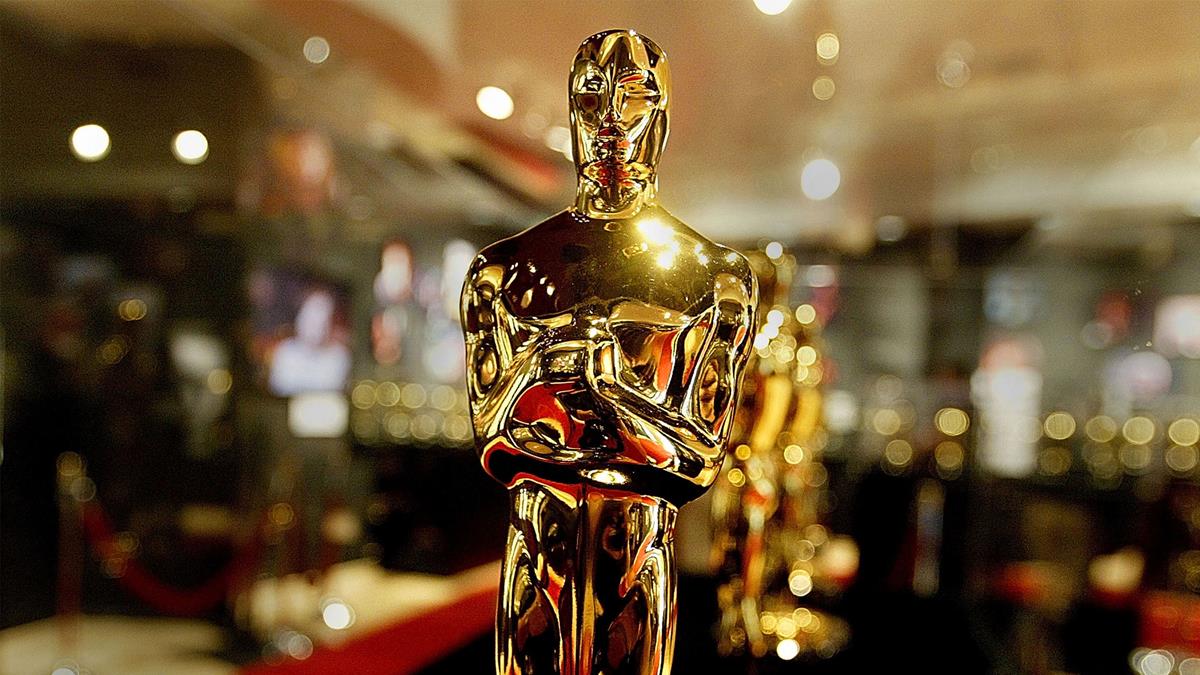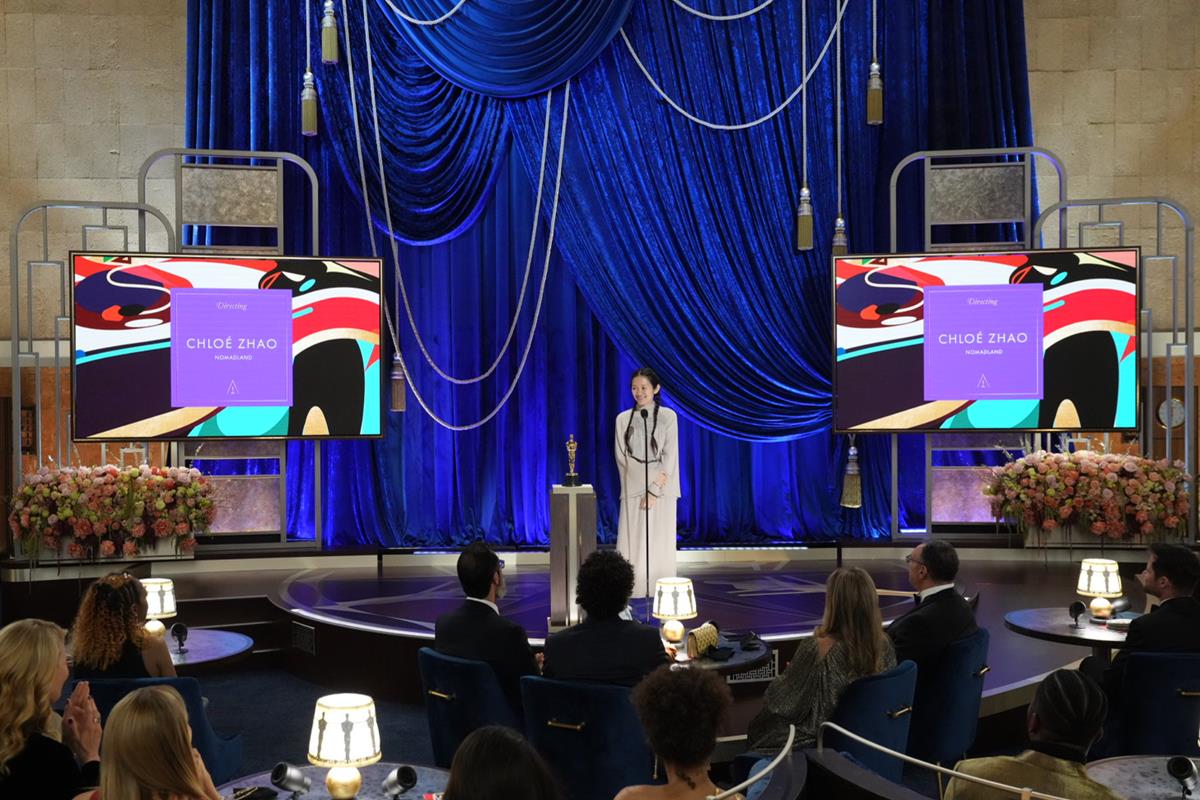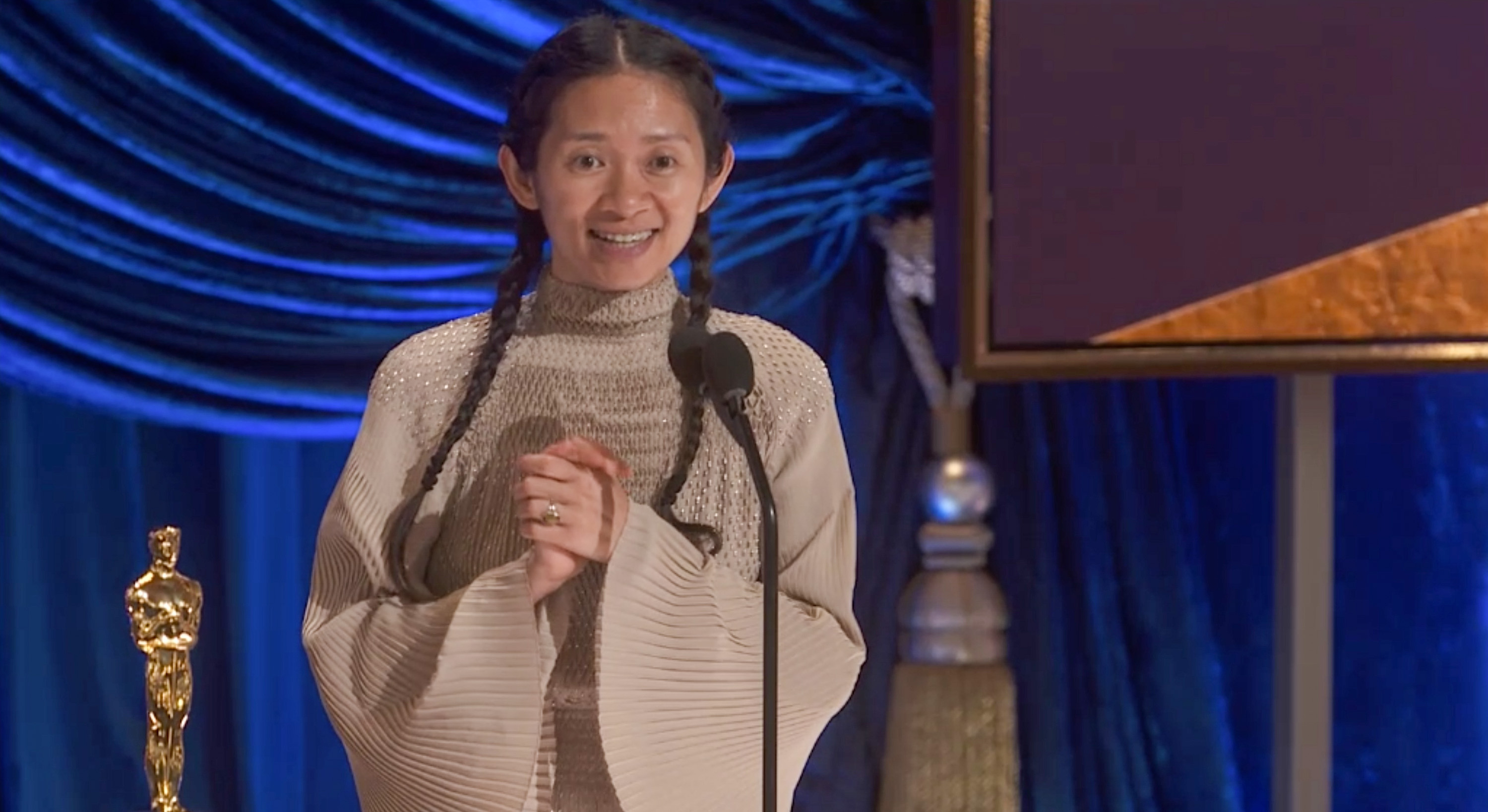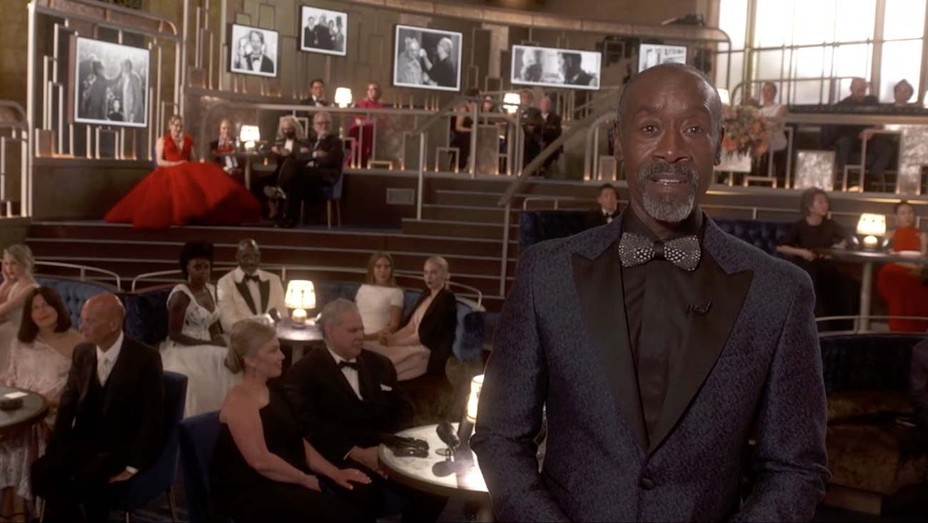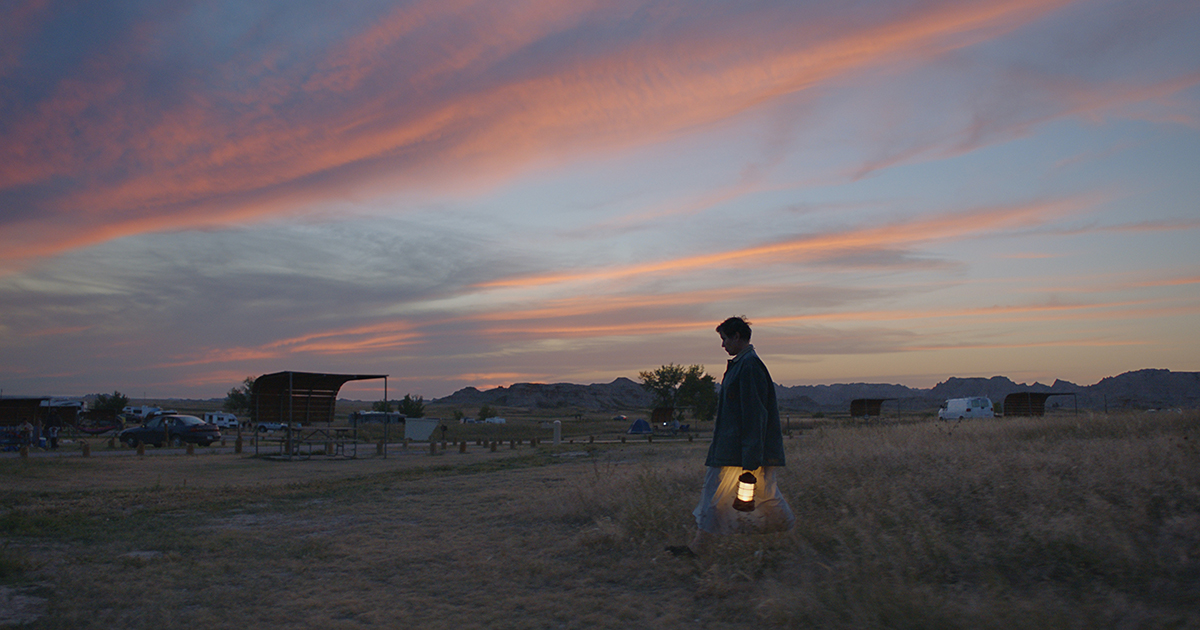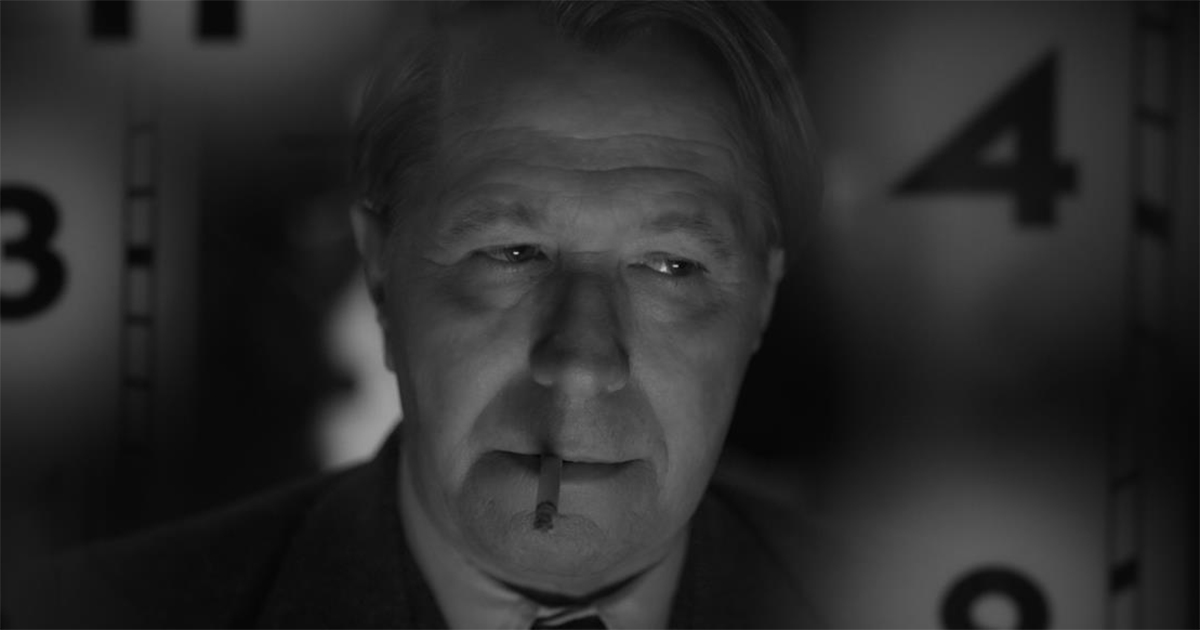
The 93rd Academy Awards drew 9.85 million viewers and a 1.9 rating among adults 18-49 on Sunday. That’s a steep drop from last year’s 23.64 million viewers and 5.3 in the key ad demographic — both of which were the previous all-time lows.
According to Rick Porter in The Hollywood Reporter, the 58 percent decline in total viewers is in keeping with those for the Grammys (which fell 51 percent), Golden Globes (62 percent) and SAG Awards (52 percent) in recent months. In the 18-49 demo, the Oscars were down by 64 percent, also in line with other awards shows.
In any case, ratings for the Oscars were already in sharp decline before the COVID-19 pandemic, dropping 44 percent between 2014 and last year, when 23.6 million people watched the South Korean thriller Parasite win the top award.
The 93rd Oscars telecast aired live coast to coast on ABC at 8 p.m. ET/5 p.m. PT on Sunday. It aired in more than 225 countries and territories worldwide. Rather than having the performances for Best Original Song happen during the main show, they were part of the pre-show while the post-show consisted of the winners getting their statues engraved. The change in show routine included the pre-show performances of the Best Original Songs, which were pre-recorded.
The Academy of Motion Picture Arts and Sciences, which according to Nicola Sperling and Brooks Barnes in the New York Times, generates about $90 million a year in after-expenses income from the Oscars telecast, handed the show to celebrated Hollywood director Steven Soderbergh and fellow producers Jesse Collins and Stacey Sher, with an instruction to shake up the telecast while also sticking to tradition (awarding statuettes in 24 categories) and complying with pandemic safety restrictions.
“This is a live show, this is not about perfection, it’s about intention, it’s about energy.”
— Steven Soderbergh
Soderbergh, who directed the 2011 virus thriller Contagion, was adamant the show would not take place over Zoom. “It’s the Academy Awards,” he said. “We all want it to be special, and that doesn’t feel special. It just doesn’t. It reminds us of the pain of the last 14, 15 months. Not the joy of cinema or going to the movies.
“This is a live show, this is not about perfection, it’s about intention, it’s about energy,” said Soderbergh. “If we have what we think is a really good idea and we execute that at 75 or 80 percent level, that’s better than 100 percent of a mediocre, old idea.”
Five-time Academy Awards telecast director Glenn Weiss was back at the helm for a sixth outing. Weiss’ brief from the producers was to make the telecast look like a movie and not a television show.
A new location, socially distanced seating and nominees appearing remotely were some of the pandemic-inspired elements at the Oscars. While some elements of the show aired from the awards’ long-time Dolby Theater home, the event largely took place from Los Angeles’ Union Station, with the set looking like a banquet dinner.
The production design came from David Rockwell of the Rockwell Group. There was a multi-tiered seating area inside the ticket concourse, custom café tables and chairs around the space, and Oscar-inspired lamps dotted through the area.
Live picture frames showcased Oscars past as well as integrating with the action in the stage area during the telecast, with eight-foot wide LED video walls on either side of the stage.
The Academy used the station’s outdoor courtyards as places where nominees could mingle before and after the show. Only nominees, their guests and presenters attended the show. They were cycled in and out of the main room, and into one of the two courtyards, so that only 170 people could be in the main room at the same time.
Those who attended the show in Los Angeles had to deal with quarantine and testing requirements. The Oscars enlisted Dr. Erin Bromage of UMass Dartmouth as its COVID-19 consultant. Bromage told The Hollywood Reporter that quarantining could be shortened if guests (a) travelled via business or first class, (b) were vaccinated, or (c) were already operating in a production bubble.
Those who couldn’t make it to LA appeared from international hubs in London and Paris with presenters and winners also appearing from Seoul, Berlin, Rome, Stockholm and Sydney — but not over Zoom.
Supervising Producer Rob Painehas been associated with the Oscars telecast for more than 20 years. Paine has more than 200 television events to his name and has earned eight Primetime Emmy Award nominations, a Daytime Emmy Award nomination and a Peabody Award.
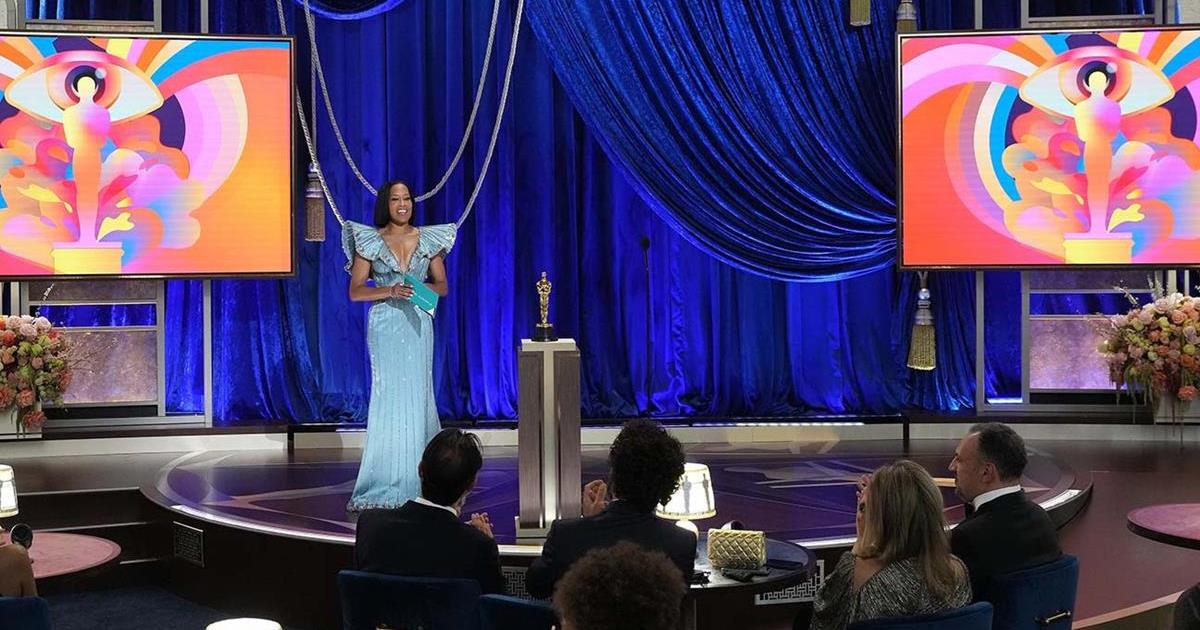
Co-producer Jeannae Rouzan-Clay joined the Oscars production team for the first time. She is a writer and producer, and the vice president of Specials for Jesse Collins Entertainment. Rouzan-Clay has been at the helm of multiple television shows for major networks and streaming platforms including CBS, BET, VH1, Nickelodeon and Netflix.
Co-producer Dionne Harmon came on board for the first time. She is the executive vice president of Content & Strategy at Jesse Collins Entertainment, where she oversees development and production of unscripted and scripted content. A four-time NAACP Image Award winner, Harmon has produced tentpoles and specials including “A GRAMMY Salute to the Sounds of Change,” “Super Bowl LV Halftime Show Starring The Weeknd,” “John Lewis: Celebrating a Hero,” “BET Awards,” “BET Hip Hop Awards,” “Soul Train Awards” and “BET Presents Love & Happiness: An Obama Celebration.”
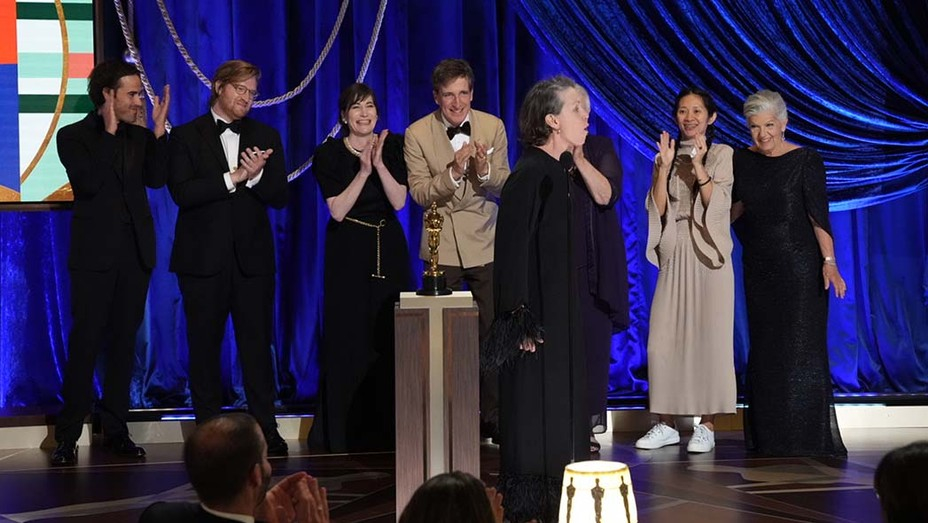
Co-producer Raj Kapoor joined the Oscars for the fifth consecutive year, overseeing screen content and performances. His recent credits include the “The Wonderful World of Disney: The Little Mermaid Live!,” “Mariah Carey’s Magical Christmas Special,” “GRAMMY Awards,” “Primetime Emmy Awards,” “Academy of Country Music Awards,” “Latin GRAMMYS,” and “The E! People’s Choice Awards.”
Verizon Debuts 5G Portals: Google Breaks Audio Description Ground
Despite this year’s awards show rating slump, Verizon remained bullish on the Academy Awards as a marketing platform. The brand rolled out seven new spots last weekend including one during the pre-show, five during the awards ceremony and one airing throughout the weekend.
“Even with ratings degradation in traditional linear, the power of a live cultural event, whether that’s sports or entertainment, still accrues simultaneous audience [more] than anything else,” John Nitti, Verizon’s Chief Media Officer told Kristina Monllos at DigiDay. “As a retail marketer by trade, we need to make sure we’re leveraging all those live events and moments to get our messages across. That’s why we still see value in live.”
“We are excited to do our part in making this year’s Oscars accessible for everyone by helping to make audio descriptions and captions available for viewers.”
— KR Liu, Google
The company also worked with the Academy and ABC to integrate deeper into the show with portals — featuring QR codes on the screen — that allowed viewers to tune-in live to areas of the show they wouldn’t normally see.
Verizon made available three different “5G portals” that viewers could seek out via social media and on their mobile devices that gave them behind-the-scenes access to the red carpet; the press area where winners and presenters talk to the media; and, for a smaller set, an engraving station where winners got to put their name on their award.
Meanwhile, Google joined ABC and the Academy of Motion Picture Arts and Sciences’ efforts to broaden access of the 93rd Oscars by sponsoringthis year’s closed captioning, and in a telecast first, audio descriptions for the live telecast nationwide.
The addition of audio description, which is audio-narrated descriptions of a program’s key visual elements, ensures that viewers who are blind and low vision would be able to take in all the action occurring on the screen and provide a much richer experience as they listen to the more traditional aspects of the show from the presenters, winners and performances.
“Google is committed to making the world a more accessible place by working to ensure disabled people are represented in the stories we tell and the products we build,” said KR Liu, head of Brand Accessibility. “We are excited to do our part in making this year’s Oscars accessible for everyone by helping to make audio descriptions and captions available for viewers.”
During the show, Google also ran an ad featuring the story of Google employee Tony Lee, a child of deaf parents, also called a CODA. The spot explored how his family communicates today with the help of Google products including Live Transcribe, Captions in Google Meet & Live Caption on Android and Chrome.
Closed captioning was provided by VITAC and audio description was by VITAC and Audio Eyes. VITAC is the largest provider of real-time and offline captioning, audio description, subtitling, and transcription products and services in North America. Audio Eyes is a partnership of audio engineers, producers, accessibility experts, blind professionals and audio description professionals who are passionate about providing high quality services in a creative, inclusive work environment.
They Thought Chadwick Boseman Was Going To Win
“What, by the way, was all the hoopla about the telecast being like a movie?” asked Scott Feinberg in his post-event analysis for The Hollywood Reporter. “Yes, it was shot with high-def cameras, but other than that?
“It feels like that was something the producers felt they had to say in order for the telecast to receive the classification of a film/TV production, which, in turn, allowed them to have attendees go maskless while on-camera — which itself was a bit questionable, not because it wasn’t safe (everyone in attendance was COVID-tested multiple times), but because it doesn’t really model best practices for the world at a time when even the vaccinated president of the United States is still masking up, and sets up Hollywood to be called hypocrites,” said Feinberg.
“Never exactly Mr. Personality when he isn’t in character, Phoenix muttered that he was supposed to talk about the transformative magic of the acting process, but he couldn’t think of anything to say.”
— Nicholas Barber, BBC
How do you explain what happened at Sunday night’s Oscars now infamous finale? Reporting for Vulture, Nate Jones wrote, “As part of their mandate to switch up the telecast, this year’s Steven Soderbergh-led production team had dispensed with a number of perennial Oscars traditions. Some categories had (long) clips; most had none. We heard none of the nominated scores, but all of the nominated songs (though performances of those were disappointingly relegated to the preshow).
“And, in the night’s biggest change, for the first time since the 1972 ceremony, when the closing segment was devoted to Charlie Chaplin’s honorary Oscar, the telecast would not end with the presentation of the Best Picture trophy. Instead, the two final slots would go to the two lead acting categories.
“Here, at least, you could see the motivation: Best Picture and Best Director were all but sewn up for Chloé Zhao’s “Nomadland,” and why end the ceremony on a fait accompli? By contrast, Best Actress was one of the night’s biggest nail-biters, so holding it until the eleventh hour would ramp up the suspense even further.
“And Best Actor was sure to go to Boseman, thus ensuring the ceremony would end on a somber memorial for the late star — a fitting conclusion to a season that took place amid social turmoil, industry-wide disruption, and mass death,” according to Jones.
“Except, as it turned out, the Best Actor trophy did not go to Boseman. It went to Anthony Hopkins, in The Father, who wasn’t even in attendance. Presenter Joaquin Phoenix mumbled a brief acceptance on Hopkins’s behalf, and just like that, the Oscars were over.”
In the BBC’s online Culture section, Nicholas Barber equally struggled to make sense of the ending of the 93rd Academy Awards ceremony. “It was very strange,” wrote Barber, “but in a way perhaps a fitting conclusion to an Oscar ceremony more low-key yet more strange than any other in living memory.
“Just as some films are so bad they’re good, the ending of the 93rd Academy Awards ceremony was so anti-climactic that it almost counted as climactic. The traditional order of the prize-giving had been shuffled, so that the best picture award, the one everyone had been waiting for, had already gone to Nomadland.
“That left best actress and best actor. Frances McDormand — the star of Nomadland — accepted her third Oscar in the former category, and hurried through the shortest speech of the night.
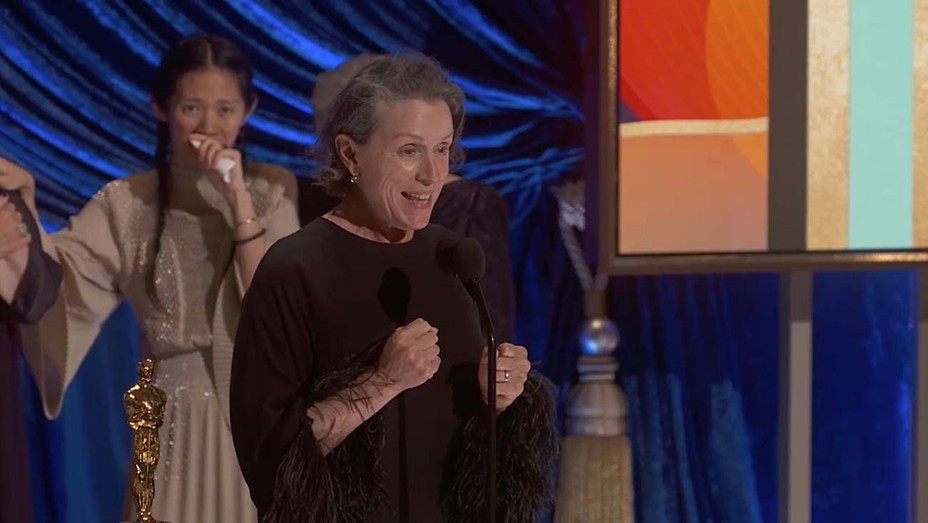
“Joaquin Phoenix then stepped on to the stage to present the best actor prize. Presumably, the producers had thought that the late Chadwick Boseman would win for Ma Rainey’s Black Bottom, thus rounding off the evening on a rousing emotional note. But the Oscar went to Anthony Hopkins for The Father, and he wasn’t at the ceremony, so cinema’s big night closed with a black-and-white headshot of the actor, and Phoenix muttering that the Academy would accept the award on his behalf.
“And that was it. The show was over. It was unbelievable.”
